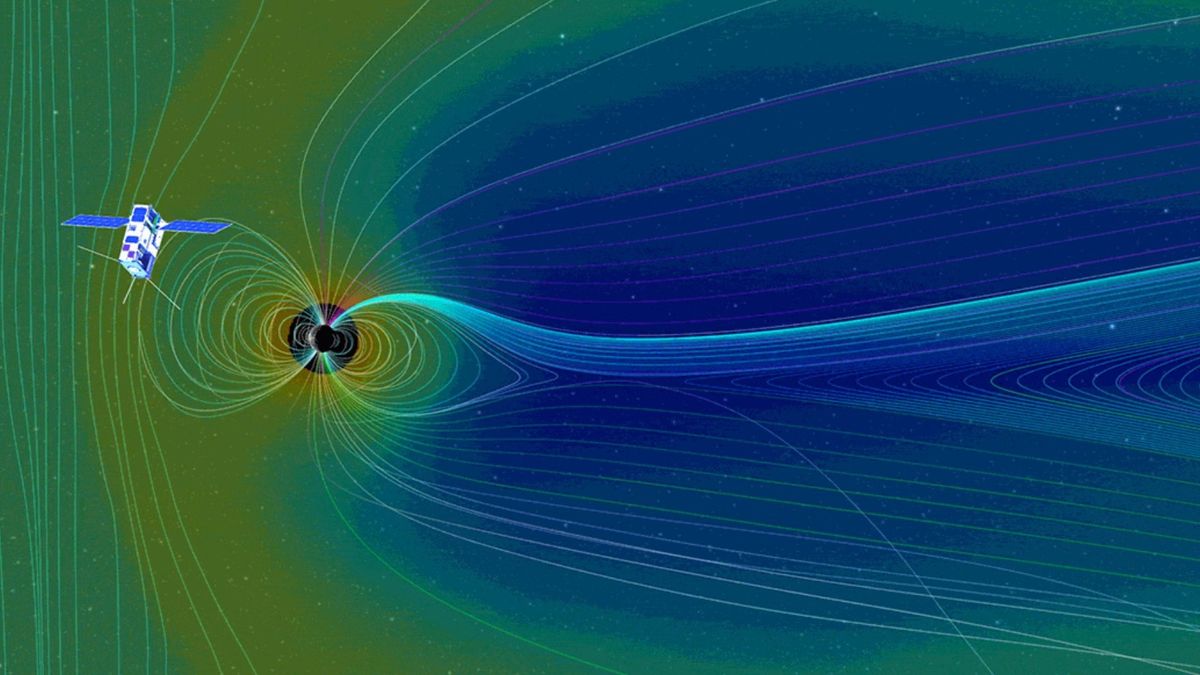
NASA's upcoming Artemis 1 mission may be focused on the moon, but at least one of its payloads will turn its focus instead to the sun.
Hitching a ride on NASA's Artemis 1 is a CubeSat weather station destined to orbit the sun in interplanetary space. The CubeSat to study Solar Particles (CuSP) is a six-unit (6U) cubesat designed by the Southwest Research Institute (SWRI) in San Antonio that will study the onslaught of solar radiation headed for Earth, otherwise known as solar wind.
The sun continually ejects energized particles that bombard Earth, but in some cases, it does so in powerful bursts known as solar flares. While one of the more beautiful side effects of such solar events is the creation of auroras, larger solar events can wreak havoc on our radio communications, satellites, power grids, and even astronauts and airline crews who are at risk of exposure to solar radiation.
Related: NASA's Artemis 1 moon mission: Live updates
As it stands, it's very difficult to forecast how a solar event will impact the Earth. A dozen or so space weather satellites are monitoring solar radiation from orbit, but that's not nearly enough to provide a clear forecast.
"Right now, it's like we're trying to understand weather for the entire Pacific Ocean with just a handful of weather stations. We need to collect data from more locations," Eric Christian, lead scientist for CuSP at NASA's Goddard Space Flight Center, said in a statement (opens in new tab). He suggests putting some 20 CubeSats in different orbits "to understand the space environment in three dimensions."
Related stories:
CuSP will demonstrate a low-cost way to devise such a network of space weather stations. For this pathfinding mission, CuSP will carry three instruments to study solar radiation: the Suprathermal Ion Spectrograph (SIS), built by SWRI; the Miniaturized Electron and Proton Telescope (MERiT), built by Goddard; and the Vector Helium Magnetometer (VHM), built by NASA's Jet Propulsion Laboratory in Pasadena. They will study low-energy particles, high-energy particles, and the strength and direction of magnetic fields, respectively.
"CuSP will be able to observe events in space hours before they reach Earth," said Mihir Desai, the principal investigator for CuSP at SWRI. "Such interplanetary observations would give us significant insight into what drives space weather, helping scientists to improve their simulations."
Follow Stefanie Waldek on Twitter @StefanieWaldek (opens in new tab). Follow us on Twitter @Spacedotcom (opens in new tab) and on Facebook (opens in new tab).
https://news.google.com/__i/rss/rd/articles/CBMiR2h0dHBzOi8vd3d3LnNwYWNlLmNvbS9hcnRlbWlzLTEtbW9vbi1taXNzaW9uLWN1c3AtY3ViZXNhdC1zcGFjZS13ZWF0aGVy0gEA?oc=5
2022-08-22 21:00:32Z
1530497579
Tidak ada komentar:
Posting Komentar